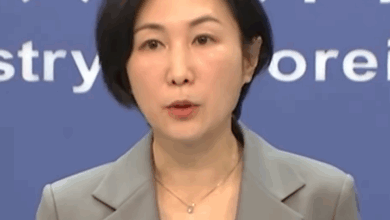
The dollar on Wednesday held above 6.5-month lows hit in previous days, as comments from a senior Federal Reserve official rekindled expectations of possible US interest rate rises.
The dollar had lost nearly all of its gains since the US elections last November as investor hopes for a fiscal boost from President Donald Trump were dulled by a scandal over his firing of former FBI director James Comey.
That, along with a recent sub-par US data has weighed on the dollar in past weeks. Citi’s Economic Surprise Index (.CESIUSD) for the United States is at its lowest since February 2016, which could mean further unexpected events on the downside.
The dollar index, which measures the greenback against a basket of peers, hit 96.767 earlier in the week, its lowest since Nov. 9, but edged lower from Tuesday’s close to trade at 97.318. .DXY.
“Perhaps given that the FOMC (Federal Open Markets Committee) was relatively hawkish, saying that the weakness we had seen in the data was temporary, the market might expect the minutes to be on the hawkish side,” said Athanasios Vamvakidis, currency strategist at Bank of America in London.
Vamvakidis said the dollar may be supported by Tuesday’s comments from Philadelphia Fed President Patrick Harker, a voting member of the FOMC, reiterating his support for two more rate hikes this year. He also said a hike in June was a “distinct possibility.”
Minutes of the Fed’s latest policy-setting meeting are set for publication at 1800 GMT on Wednesday.
The dollar was 0.1 percent higher at 111.85 yen JPY= after a bounce to 112.050 yen JPY=, its highest in a week.
It also halted its slide against the euro, which had enjoyed a bull run this month on factors including an ebb in French political concerns, upbeat euro zone data, and a widening German-U.S. government debt yield spread.
The euro was up 0.1 percent at $1.1189 EUR=, having scaled a 6-1/2-month high of $1.1268 on Tuesday.
Moody’s Downgrades China
Moody’s Investors Services on Wednesday downgraded China’s long-term local and foreign currency issuer ratings by one notch to A1 from Aa3, citing expectations that the financial strength of the world’s second-biggest economy would erode in the coming years.
China’s offshore yuan slipped in a knee-jerk reaction but the overall response was limited. The yuan fell to 6.8902 per dollar CNH=D4, down by 0.1 percent.
The Australian dollar, sometimes used as a proxy of China-related trades, eased slightly but reaction to the downgrade was also relatively subdued. The Aussie was down 0.2 percent at $0.7463 AUD=D4.
“Currencies are reacting quite calmly, as China is still seen to have enough reserve strength for further fiscal spending,” said Masahiro Ichikawa, senior strategist at Sumitomo Mitsui Asset Management in Tokyo.
Elsewhere, the Canadian dollar stood steady at C$1.3518 CAD=D4 per dollar after touching C$1.3457 overnight, its strongest in a month.
A rise in crude oil prices lifted the Canadian dollar. The focus is now on the OPEC meeting in Vienna on Thursday to see whether a deal to prolong output cuts can be struck.
Reporting by Ritvik Carvalho (London); Additional reporting by Tokyo markets team; Editing by Raissa Kasolowsky; Reuters




